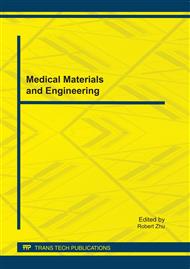p.167
p.172
p.178
p.183
p.191
p.195
p.200
p.206
p.210
Neural Respiratory Drive during CO2 Rebreathing Assessed by a Combined Esophageal Electrode Catheter
Abstract:
Assessment of neural respiratory drive is useful for diagnosis and management of breathing difficulty. The diaphragm is the most important muscle of respiration, therefore its electrical activity during spontaneously breathing could be used to reflect neural respiratory drive. In this study a catheter which was composed of 10 electrodes and two balloons was developed and was used to assess neural respiratory drive during CO2 rebreathing in six healthy subjects. There was a good linear relationship between diaphragm EMG and end-tidal CO2 (r = 0.98±0.01) during CO2 rebreathing. Transdiaphragmatic pressure was also well correlated with end-tidal CO2 during CO2 rebreathing. We concluded that the combined catheter developed in this study can be used to assess neural respiratory drive.
Info:
Periodical:
Pages:
191-194
Citation:
Online since:
November 2011
Authors:
Price:
Сopyright:
© 2012 Trans Tech Publications Ltd. All Rights Reserved
Share:
Citation:


